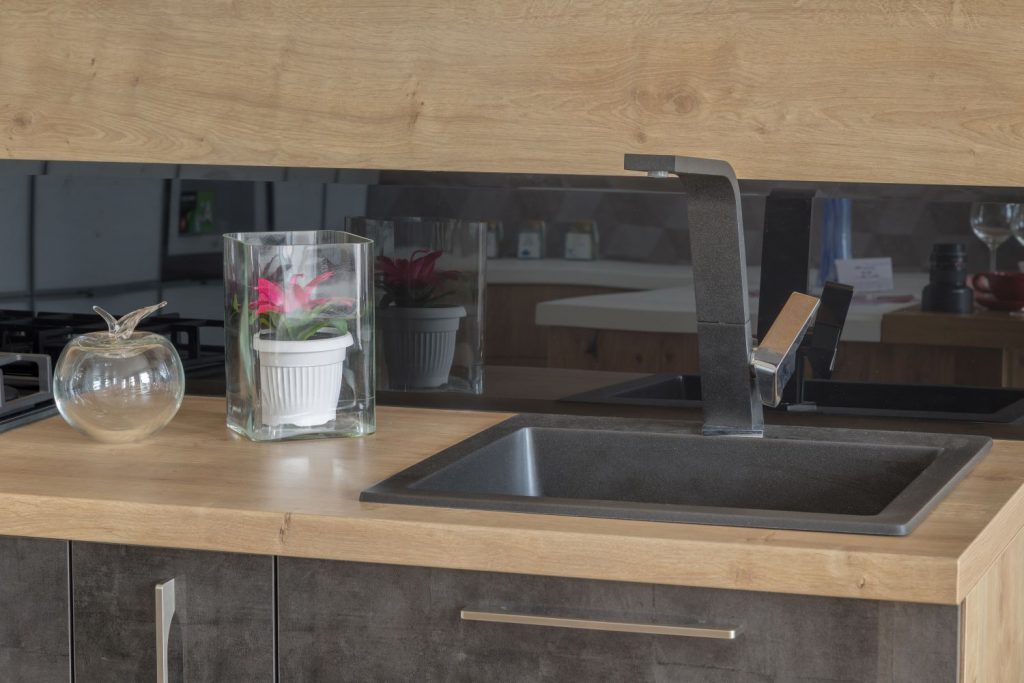Choosing a colored sink for your kitchen adds a unique touch to the heart of your home. However, over time, you might notice that the original vibrant hue of your sink begins to fade, taking on a whitish tinge. This common issue in modern kitchens can be frustrating, but fortunately, there are several effective methods to restore and maintain the original color of your sink.

Why does a colored sink lose its hue?
Several factors contribute to the discoloration of your sink. Prolonged exposure to sunlight, the use of harsh cleaning products, and hard water rich in minerals like calcium and magnesium can all lead to the whitening of the sink material.
Effects of sunlight
Continuous exposure to sunlight can cause the pigments in your sink to break down, leading to fading. If your sink is near a window, consider using blinds or curtains to minimize direct sunlight.
Harsh chemicals and cleaning products
Using abrasive cleaners can strip away the protective coating of your sink, leading to discoloration. It’s essential to choose the right cleaning products to avoid damaging the surface.
Hard water deposits
Hard water can leave behind calcium and magnesium deposits, which appear as white stains on your sink. These deposits can be stubborn and difficult to remove if not addressed promptly.
Daily cleaning tips for colored sinks
To maintain the vibrancy of your colored sink, it’s crucial to use gentle, non-abrasive cleaning products.
White vinegar solution
White vinegar is a natural cleaning agent that can effectively remove stains. Mix it with warm water and apply it to the sink surface with a sponge or microfiber cloth.
Glass cleaner
A non-ammonia glass cleaner can be effective in removing stains and restoring color. Spray it on the sink and wipe it off with a soft cloth.
Isopropyl alcohol
Isopropyl alcohol is a versatile cleaner that can be used on colored sinks. Apply it with a soft cloth and rinse with clear water.
Clay stone cleaner
Clay stone, known for its descaling properties, can be used to clean and polish your sink. Wet a sponge with water and white clay, apply it to the sink, and rinse thoroughly.
Black soap
Black soap is a natural and gentle product that can remove stains while reviving the color of your sink. Apply it with a sponge or microfiber cloth and rinse with warm water.
Preserving the color of your sink
Using turpentine essence
Turpentine essence can protect the surface of your kitchen sink and prevent discoloration. Apply a small amount with a soft cloth and let it dry.
Regular wiping
Regularly wiping your sink with a soft cloth can prevent the accumulation of limescale and white deposits. Rinse and dry the sink after each use to avoid water spots and food residue.
Additional tips for sink maintenance
Avoiding scratches
Be mindful of not using abrasive sponges or scrubbers that can scratch the surface of your sink. Scratches can make it more susceptible to staining and discoloration.
Regular maintenance
Regular maintenance is key to preserving the color and condition of your sink. Inspect for any signs of wear and address them promptly.
Professional advice
If you’re unsure about the right products to use or if your sink requires special care, don’t hesitate to seek advice from a professional.
Conclusion
Maintaining the original color of your colored sink doesn’t have to be a daunting task. By understanding the causes of discoloration and using the right cleaning methods, you can keep your sink looking as vibrant and inviting as the day it was installed. Regular care and the right products will ensure that your kitchen remains a bright and welcoming space in your home.

 Open Immovlan
Open Immovlan